
Paz Mali, Noa berkovitz, Talia Raviv,
Sharon Fridman, Einav Mshelh
LMS Platform
Redesigning
BigID University
ROLE
UX UI Designer
SCOPE
Internship
TIME FRAME
4 Weeks
YEAR
2025
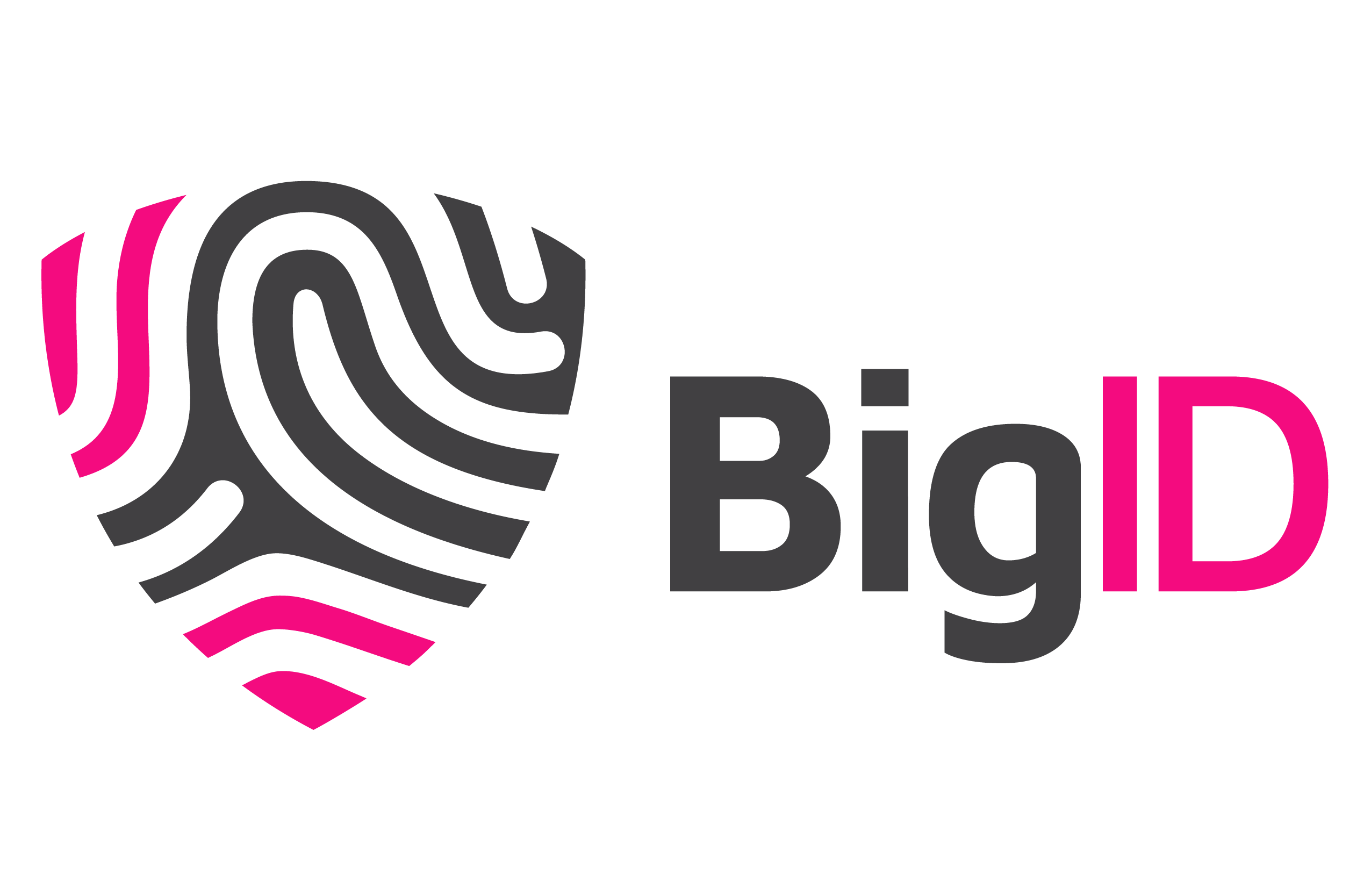
BigID helps organizations discover, classify, and protect sensitive data using AI-driven tools for privacy, security, and compliance.
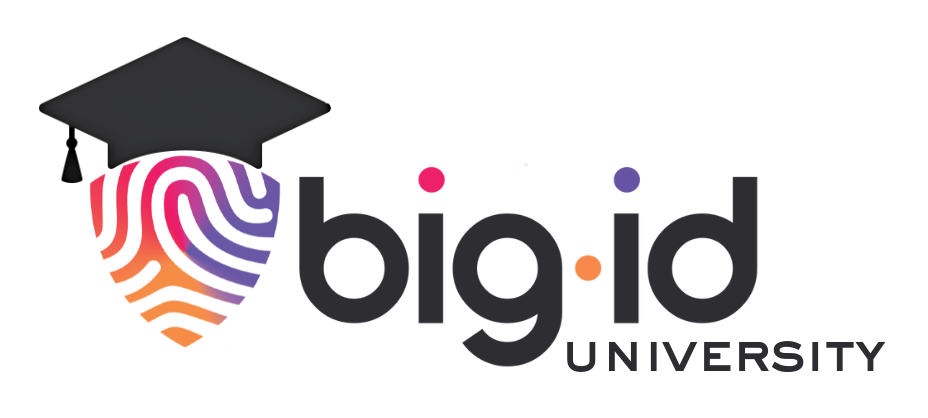
BigID University offers structured learning paths and hands-on training to help users master the platform and get certified in data intelligence.
About BigID

BigID helps organizations discover, classify, and protect sensitive data using AI-driven tools for privacy, security, and compliance.

BigID University offers structured learning paths and hands-on training to help users master the platform and get certified in data intelligence.
Original BigID University


The mission
The challenge

Original home page
1. Usability Issues
Navigation was unclear, with inconsistent structure and limited user guidance, making it hard for users to understand where to start or how to track progress.
2. UI Issues:
Visual design felt outdated and unaligned with BigID’s product branding, reducing trust and engagement from high-profile clients.
3. UX Issues
The experience lacked personalization and failed to support user goals efficiently—resulting in low motivation, scattered learning, and missed business opportunities.
4. Engagement & Motivation Issues (Badges)
Badges were visually outdated and awarded too often, reducing their value. This gave users little reason to share them, missing a key opportunity for motivation and brand exposure.

The challenge
1. Usability Issues
Navigation was unclear, with inconsistent structure and limited user guidance, making it hard for users to understand where to start or how to track progress.
2. UI Issues
Visual design felt outdated and unaligned with BigID’s product branding, reducing trust and engagement from high-profile clients.
3. UX Issues
The experience lacked personalization and failed to support user goals efficiently—resulting in low motivation, scattered learning, and missed business opportunities.
4. Engagement & Motivation Issues (Badges)Badges were visually outdated and awarded too often, reducing their value. This gave users little reason to share them, missing a key opportunity for motivation and brand exposure.
The Challenge
Usability Issues
Navigation was unclear, with inconsistent structure and limited user guidance, making it hard for users to understand where to start or how to track progress.
UI Issues
Visual design felt outdated and unaligned with BigID’s product branding, reducing trust and engagement from high-profile clients.
UX Issues
The experience lacked personalization and failed to support user goals efficiently—resulting in low motivation, scattered learning, and missed business opportunities.
Engagement & Motivation Issues
Badges were visually outdated and awarded too often, reducing their value. This gave users little reason to share them, missing a key opportunity for motivation and brand exposure.
The Challenge
.png)
Usability Issues

Navigation was unclear, with inconsistent structure and limited user guidance, making it hard for users to understand where to start or how to track progress.
UI Issues

Visual design felt outdated and unaligned with BigID’s product branding, reducing trust and engagement from high-profile clients.
The experience lacked personalization and failed to support user goals efficiently—resulting in low motivation, scattered learning, and missed business opportunities.

UX Issues
Badges were visually outdated and awarded too often, reducing their value. This gave users little reason to share them, missing a key opportunity for motivation and brand exposure.

Engagement & Motivation Issues

UX Best Practices in Modern LMS Systems
We studied current UX trends in digital learning platforms, focusing on personalization, cognitive load reduction, and motivation-driven design.

Academic Literature
We consulted UX and educational research to back our design decisions with evidence-based practices.

BigID’s Existing University Platform
We analyzed the current platform to uncover key usability and engagement
issues, helping us prioritize areasfor improvement.

Competitive & Benchmark Research
We analyzed both direct competitors to understand product-specific learning experiences, and broader LMS platforms like to identify effective learning flows and engagement strategies.
BigID’s Existing University Platform
We analyzed the current platform to uncover key usability and engagement
issues, helping us prioritize areasfor improvement.
Competitive & Benchmark Research
We analyzed both direct competitors to understand product-specific learning experiences, and broader LMS platforms like to identify effective learning flows and engagement strategies.
Academic Literature
We consulted UX and educational research to back our design decisions with evidence-based practices.
UX Best Practices in Modern LMS Systems
We studied current UX trends in digital learning platforms, focusing on personalization, cognitive load reduction, and motivation-driven design.

HOVER
We analyzed the current platform to uncover key usability and engagement
issues, helping us prioritize areasfor improvement.
BigID’s University Platform

We analyzed both direct competitors
to understand product-specific learning experiences, and broader LMS platforms like to identify effective learning flows and engagement strategies.
Competitive & Benchmark Research

We consulted UX and educational research to back our design decisions
with evidence-based practices.
Academic Literature

We studied current UX trends in digital learning platforms, focusing on personalization, cognitive load reduction, and motivation-driven design.
UX Best Practices in Modern LMS Systems

The Research

Our Figjam Research board
The Research

BigID’s Existing University Platform
We analyzed the current platform to uncover key usability and engagement
issues, helping us prioritize areasfor improvement.

Competitive & Benchmark Research
We analyzed both direct competitors to understand product-specific learning experiences, and broader LMS platforms
like to identify effective learning flows and engagement strategies.

Academic Literature
We consulted UX and educational research to back our design decisions with evidence-based practices.

UX Best Practices in Modern LMS Systems
We studied current UX trends in digital learning platforms, focusing on personalization, cognitive load reduction, and motivation-driven design.
Our insights
01
First Impressions Matters
02
Personalization Drives Motivation
03
Reduce Cognitive Load
04
gamification improves experience
05
Inclusivity & Accessibility
06
Learners Need Autonomy
Redesign Methodology
& Design thinking
During the BigID workshop, we used a structured design thinking approach to align our redesign efforts with core values, user needs, and strategic priorities.
1. The Iceberg Method
We defined core values like clarity, motivation, and structure to guide our design—ensuring every decision aligned with the experience we wanted to create.

2. Prioritization Matrix
We evaluated our ideas using an impact vs. effort matrix to identify quick wins and high-impact features, helping us focus on what would bring the most value within our time constraints.
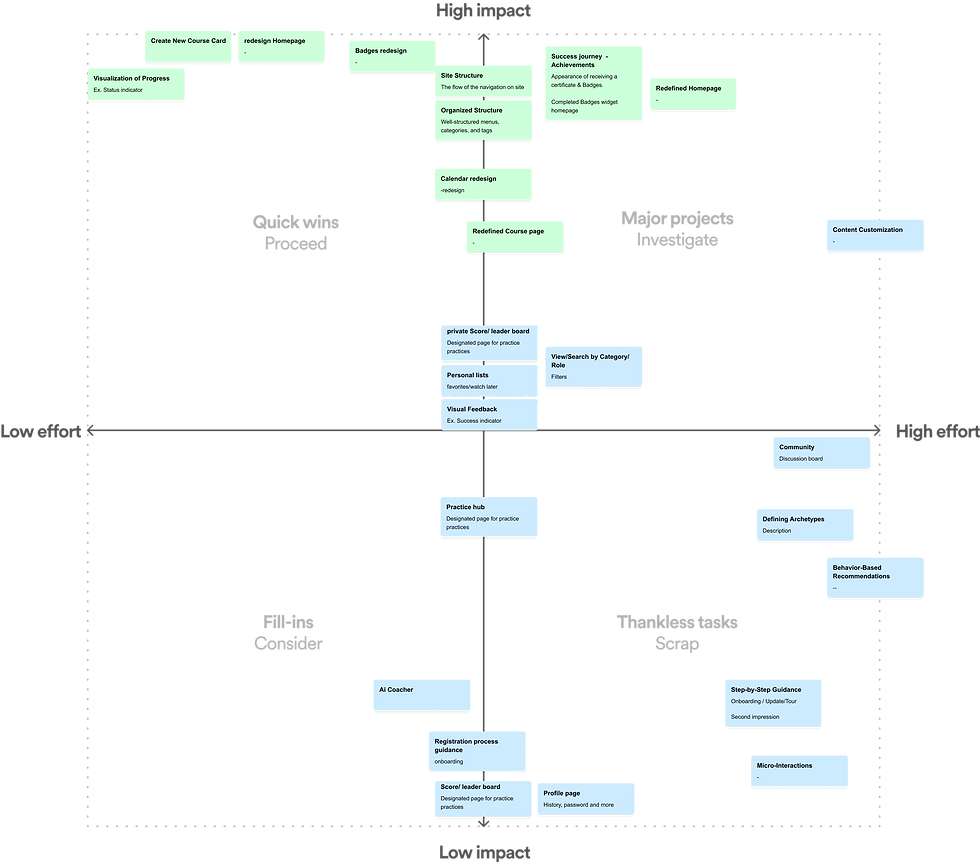
3. Bricks method
We used color-coded bricks to map user needs, separating core content (data) from context (metadata). This structure guided content prioritization and shaped our first wireframes—ensuring clarity from concept to design.
User testing & Stakeholder interviews
We tested our various options of designs and builds and presented to the BigID'S university stakholders our product.

High fidelity mockups
User testing & Stakeholder interviews
We tested our various options of designs and builds and presented to the BigID'S university stakholders our product.

High fidelity mockups
Final Product
Each screen and flow in the final product reflects the core insights we uncovered—translated into clear, user-centered visual solutions. From first impressions to personalized learning and simplified navigation, every design decision was made to improve the learning experience while supporting BigID’s business goals.



Each screen and flow in the final product reflects the core insights we uncovered—translated into clear, user-centered visual solutions. From first impressions to personalized learning and simplified navigation, every design decision was made to improve the learning experience while supporting BigID’s business goals.
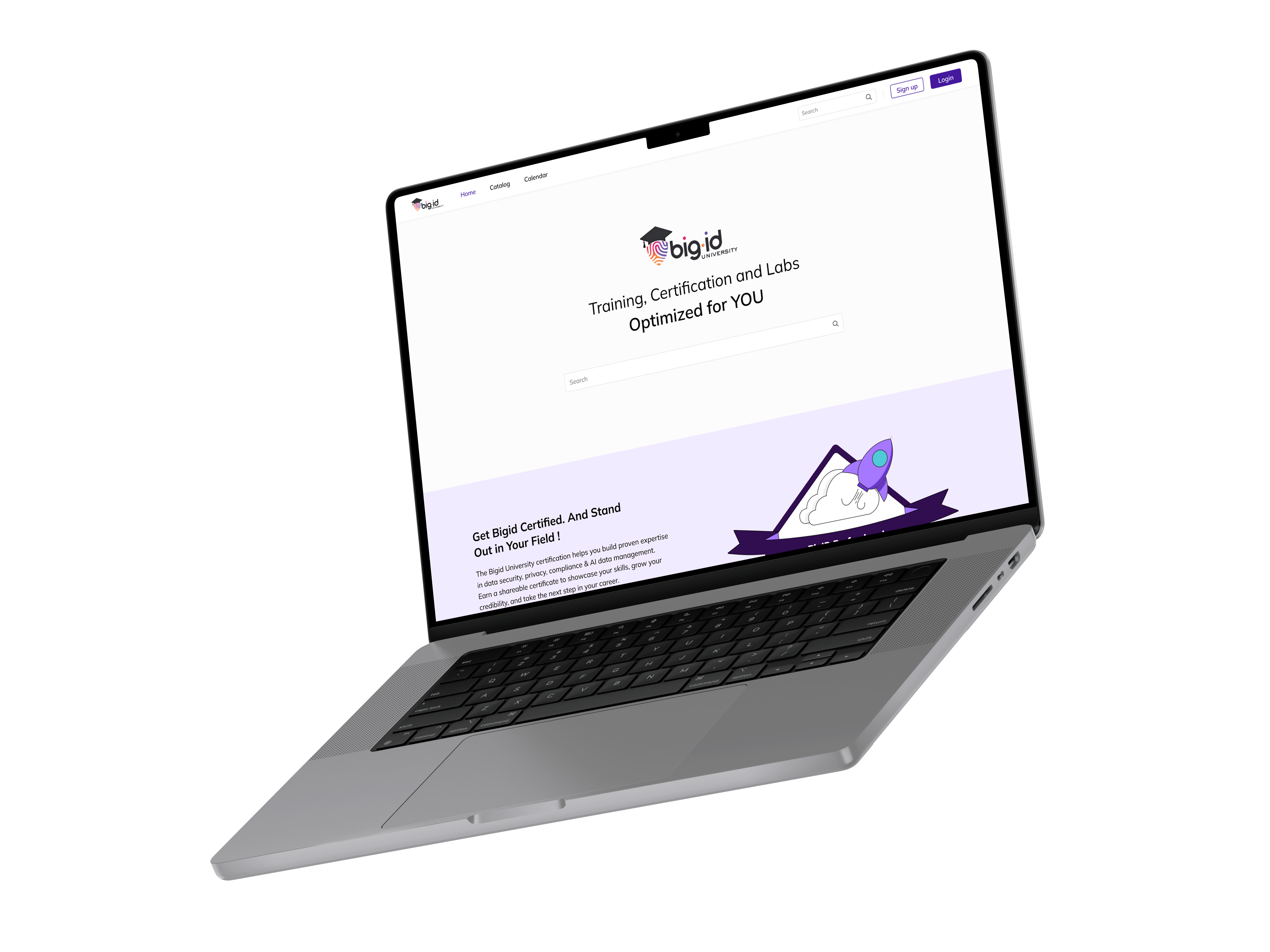
01 New Landing page


First Impressions That Build Trust
We redesigned the BigID University landing page to make a strong, professional first impression—reinforcing brand value and assuring high-investment clients that the learning experience matches the product’s quality.
02 personalized home page Interface

Personalized Homepage for Users & Business Our homepage highlights personal classes and role-based suggestions, while encouraging exploration of broader content. This boosts user autonomy and motivation—while also supporting BigID’s goal of increasing platform usage.

03 New catalog page

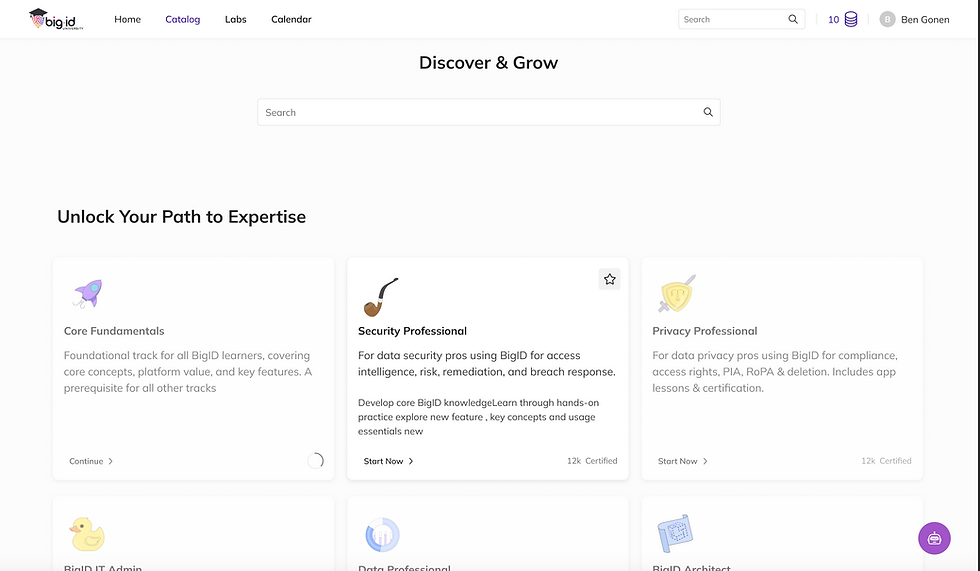
Smarter Course Catalog for Easy DiscoveryWe redesigned the catalog with clear categories, filters, and search to reduce cognitive load—making it easier for users to find relevant courses and explore with ease.
04 Improved learning flow


We improved structure, navigation, and progress tracking to help users learn efficiently and complete paths smoothly—supporting faster mastery of the BigID platform.
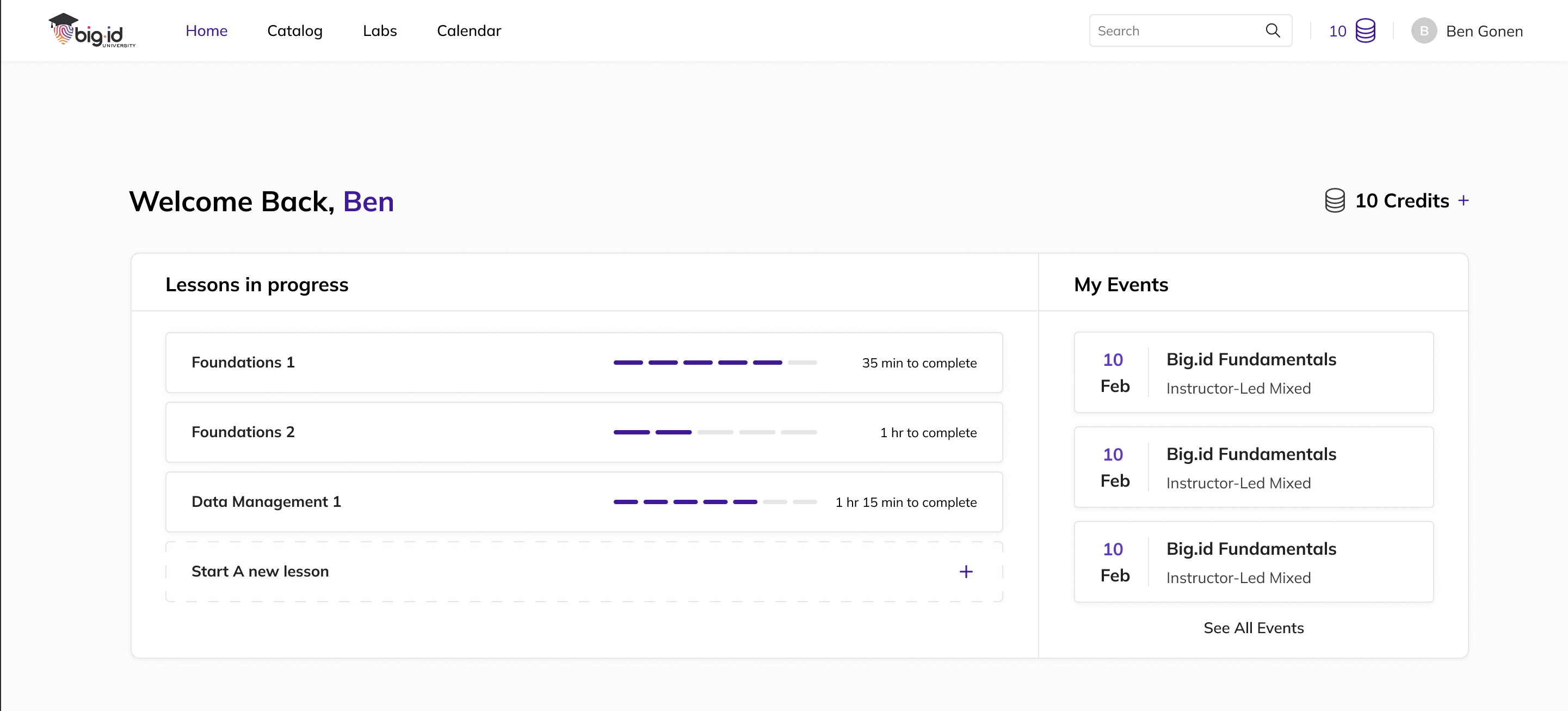
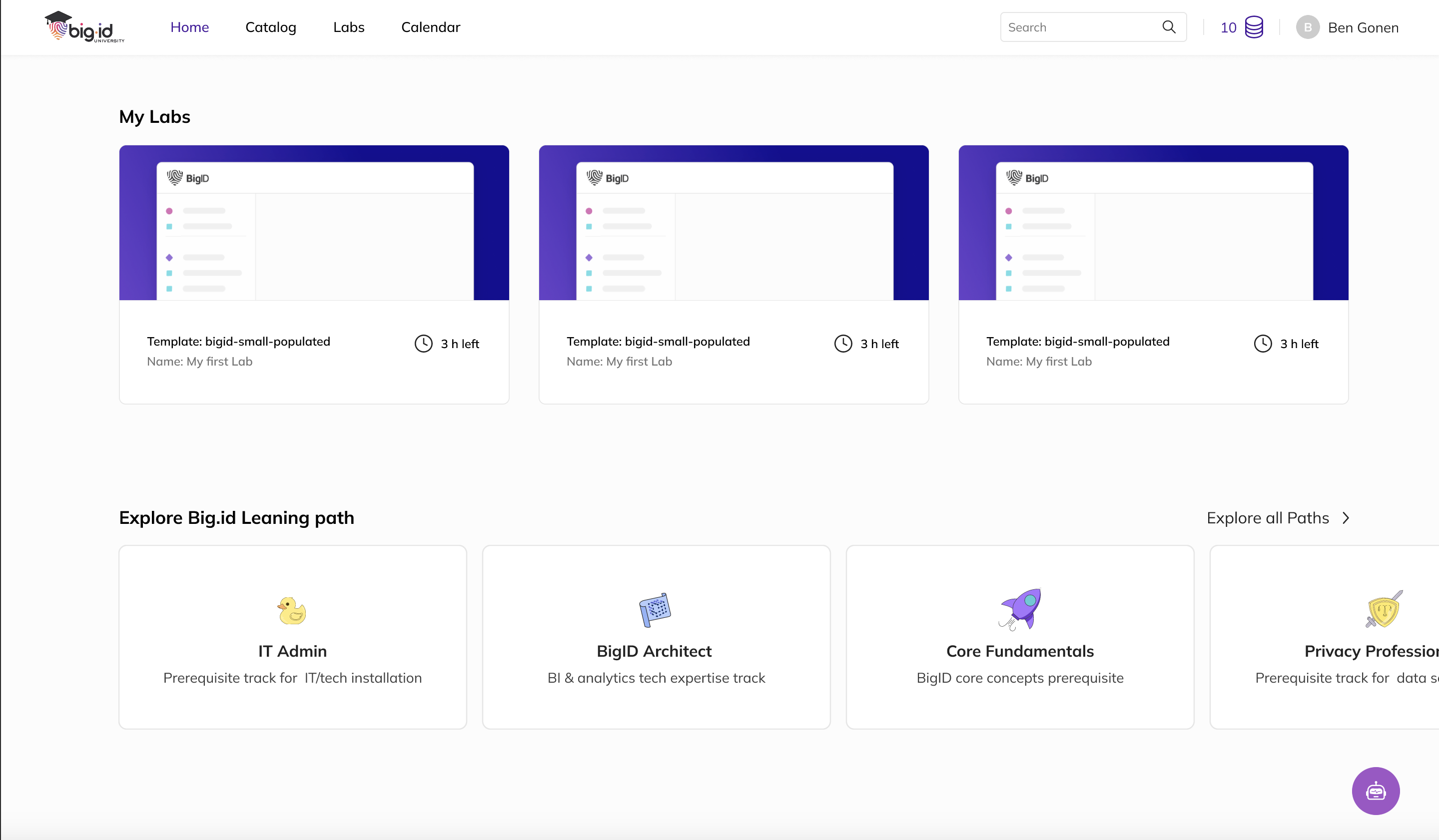
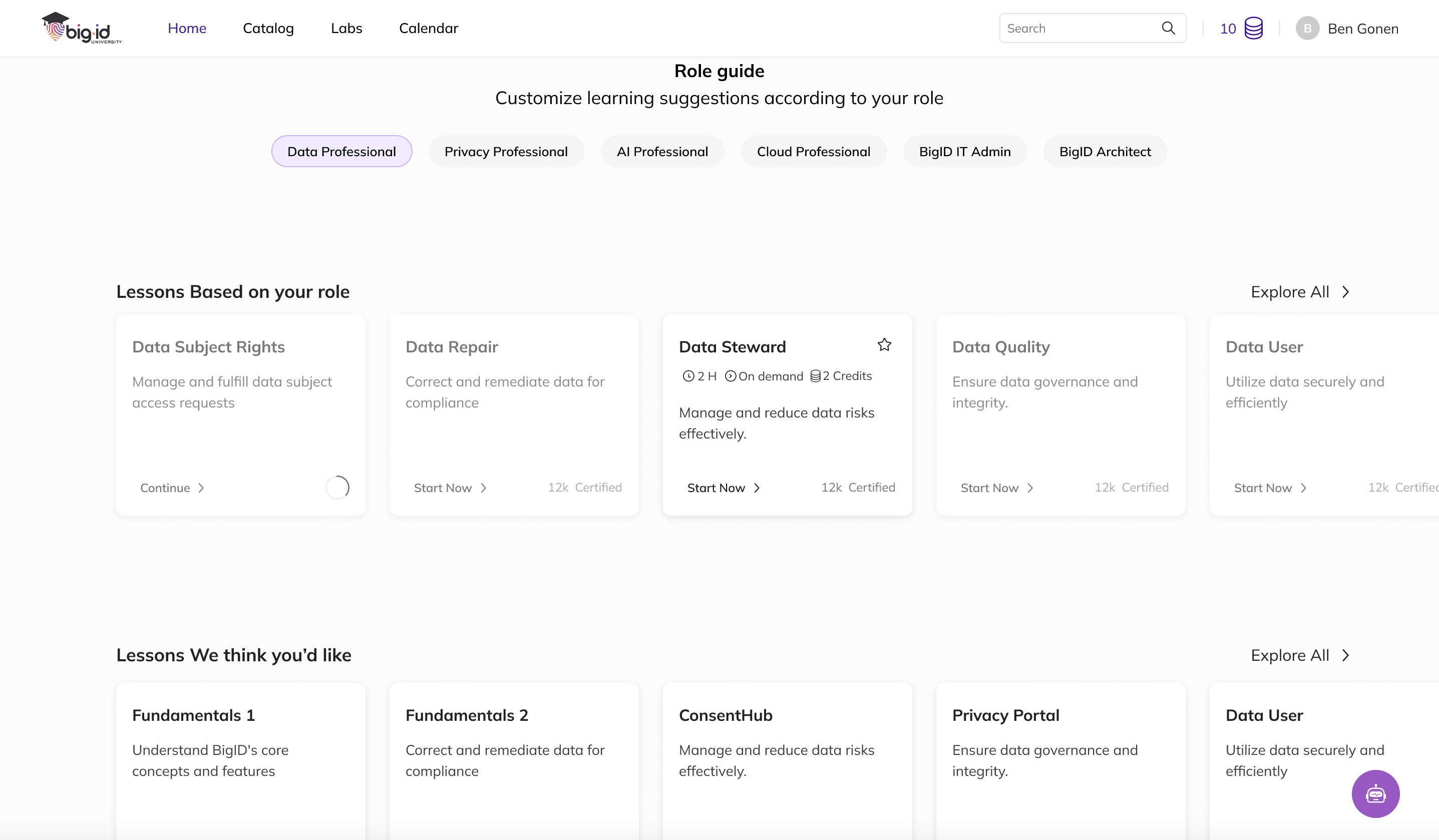
We based most of the badge icons on BigID’s existing design system, ensuring brand consistency, and created several new icons where needed—following BigID’s brand guidelines and using their marketing color palette with slight stylistic refinements. This allowed us to design a personalized, scalable badge system tailored to each user role.
05 Motivation Through Recognition
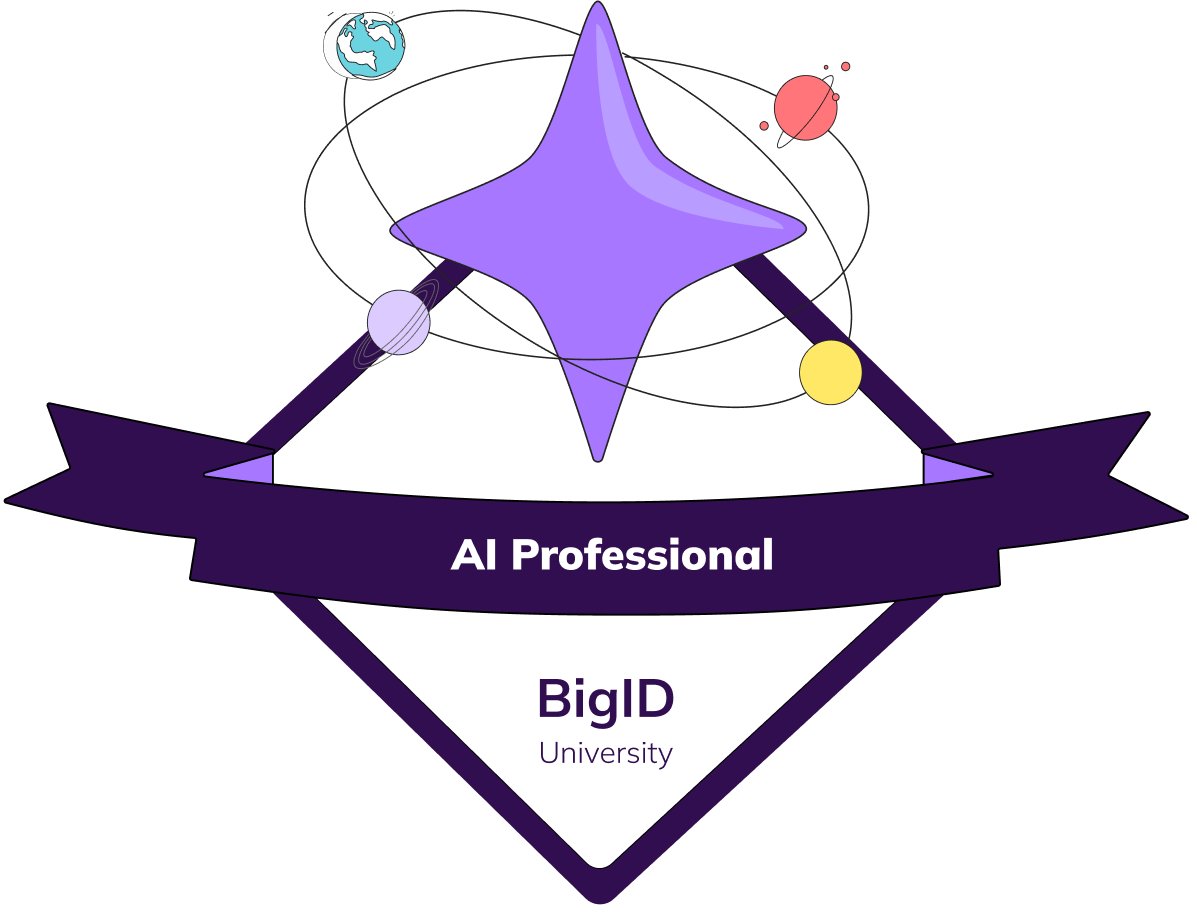
New Badge

New Badge

New Badge

Original Badge

Original Badge

New Badge

Original Badge
Redesigned Badges
Redesigned Badges for Motivation & Sharing
We enhanced badge design for shareability and visual appeal, awarding them only after full path completion to boost value—encouraging motivation and professional sharing.
We based most of the badge icons on BigID’s existing design system, ensuring brand consistency, and created several new icons where needed—following BigID’s brand guidelines and using their marketing color palette with slight stylistic refinements. This allowed us to design a personalized, scalable badge system tailored to each user role.


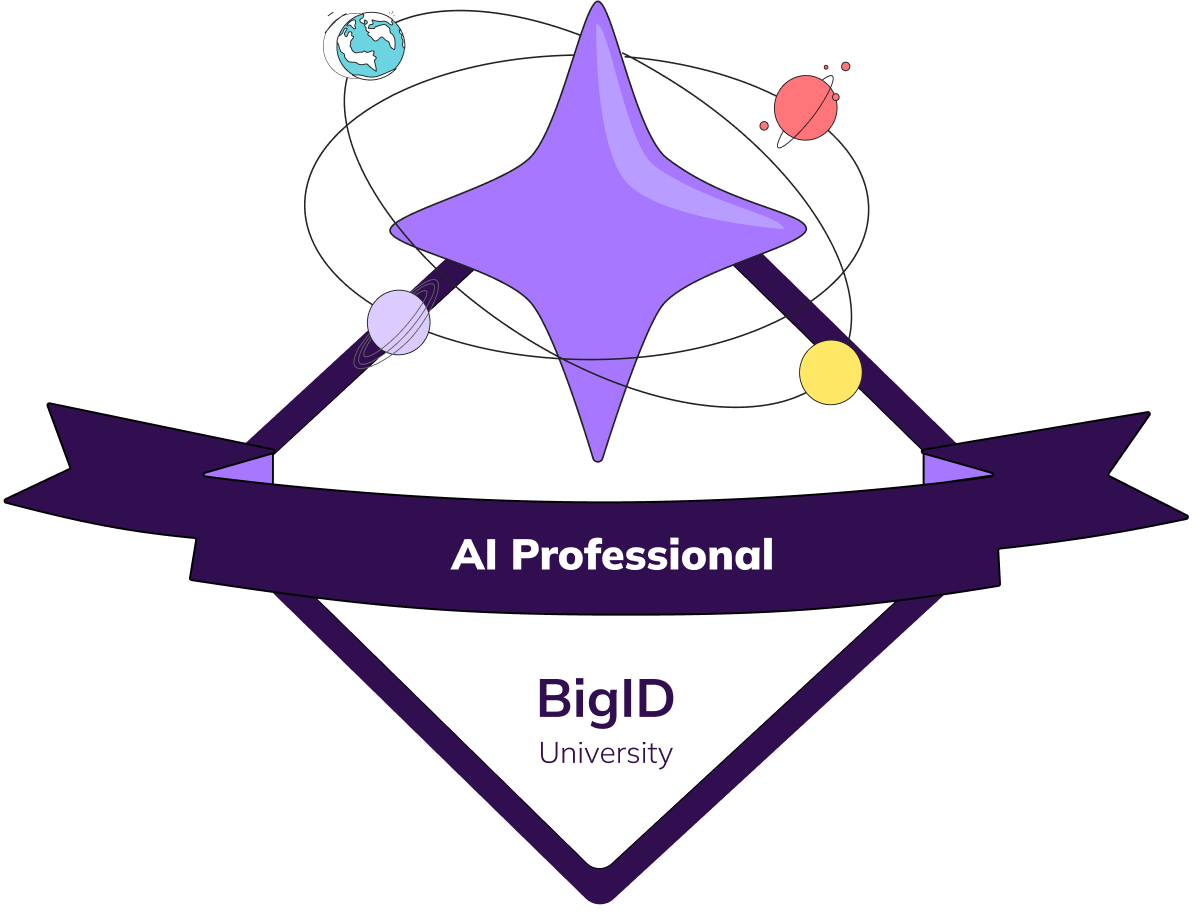
We designed a flexible badge system where icon roles stay consistent, while shape and color adapt to levels—supporting future certifications and growth without needing full redesigns.

Scalable Badge System for Growth
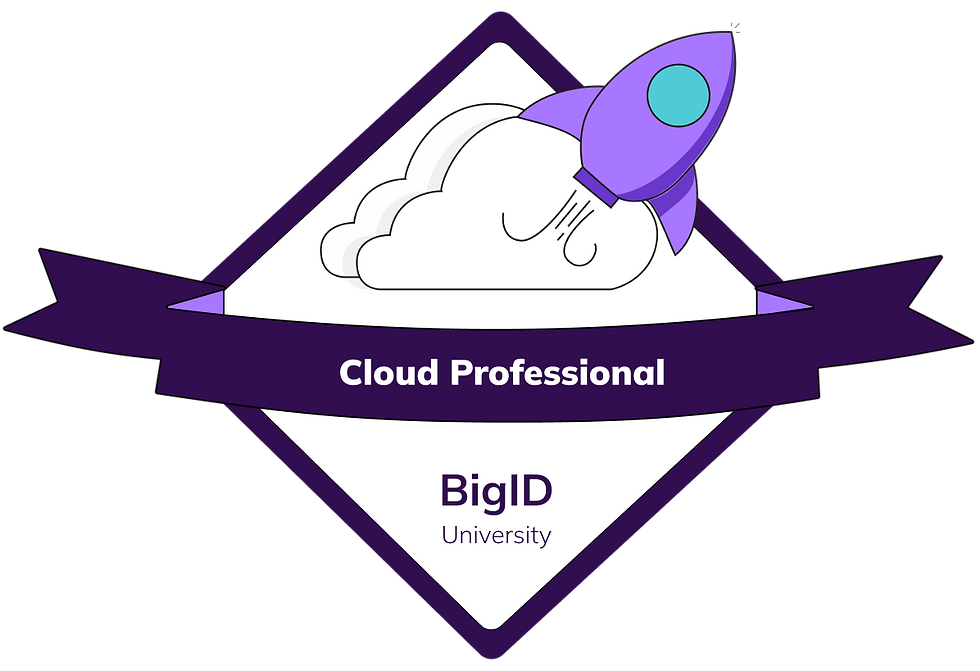

Level 3
Level 1
Level 2

Level 3
Level 1

Scalable Badge System for Growth
We designed a flexible badge system where icon roles stay consistent, while shape and color adapt to levels—supporting future certifications and growth without needing full redesigns.
Level 2


Full prototype


Key Takeaways
What I Learned
Through this project,
I learned how to apply UX methodologies to a real, complex product by working directly with stakeholders and aligning design decisions with both user needs and business goals.
I deepened my skills in research, prioritization, and system thinking, while also learning to work within an existing design system to create meaningful improvements.
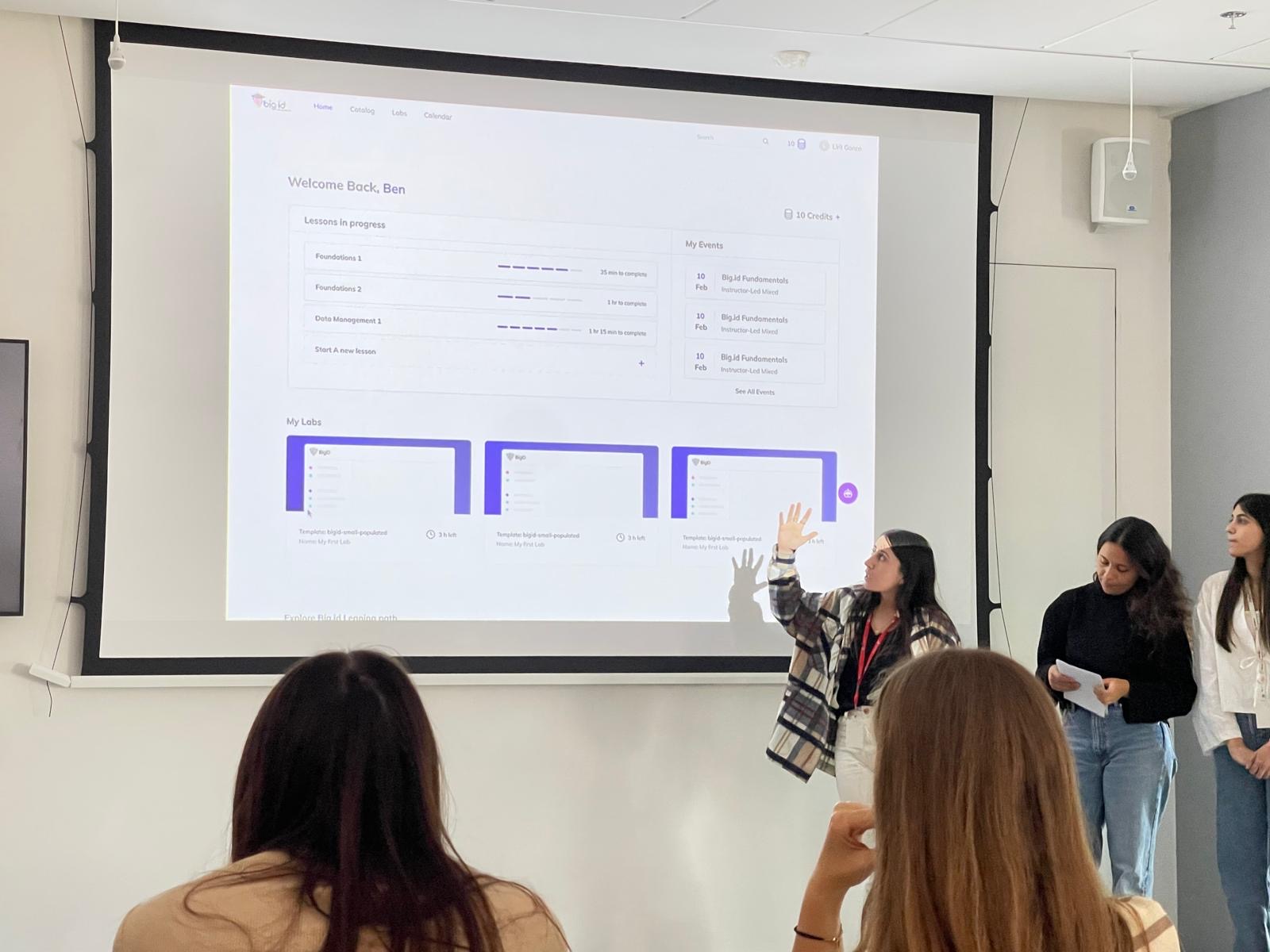

What BigID Gained
For BigID, this collaboration provided a fresh, research-backed perspective on the value of redesigning their University platform. Our work helped highlight the platform’s strategic importance, justified internal investment, and demonstrated how student-led innovation can contribute real value when grounded in product thinking and practical design.










